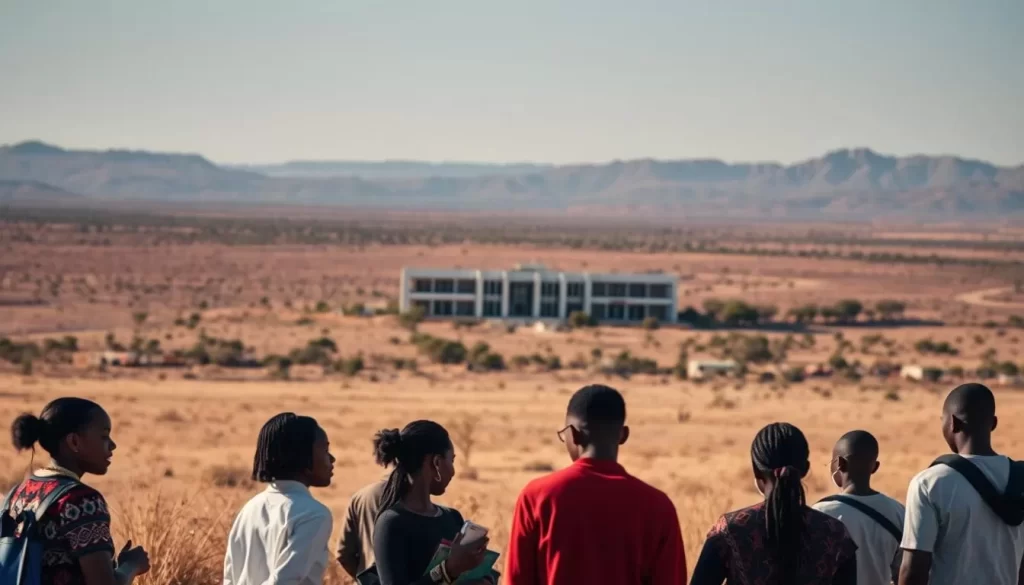✓ Accommodations✓ Flights✓ Rental Cars✓ Tours & Activities
Namibia’s linguistic landscape is as diverse as its culture. With a population of 2.1 million, this country in southern Africa is home to a variety of languages that reflect its history and heritage. English is the sole official language, but only 3% of the population speaks it at home.
Indigenous languages like Oshiwambo dominate, spoken in nearly 49% of households. This reflects the influence of the Ovambo people, who make up a significant portion of the population. Other languages, such as Khoekhoe and Afrikaans, also play vital roles in daily life.
Namibia’s history as a former German colony and its time under South African administration have shaped its linguistic identity. Today, the country’s multilingual society thrives, with each language contributing to its unique cultural fabric.
Overview of Namibia’s Rich Linguistic Heritage
The story of Namibia’s languages is deeply rooted in its colonial past and cultural evolution. From German occupation to South African rule, the country’s linguistic identity has been shaped by centuries of change. Independence in 1990 marked a turning point, establishing English as the sole official language.

Historical Evolution from Colonization to Independence
German colonization in the late 19th century introduced European influences, while South African administration later brought Afrikaans into prominence. These periods left lasting marks on the language landscape. By the time of independence, English was chosen to unify the diverse population and promote inclusivity.
Cultural and Demographic Influences on Language Growth
The arrival of the Bantu Ovambo people significantly shaped the linguistic dynamics. Today, Oshiwambo dialects are spoken by nearly 49% of households, making it the most widely used language. Other indigenous languages, like Khoekhoegowab and Otjiherero, also play vital roles in daily life.
This blend of history and culture has created a vibrant multilingual society. Languages from diverse families—Indo-European, Khoisan, and Bantu—coexist, reflecting the country’s rich heritage. Understanding this evolution helps you appreciate the complexity and beauty of Namibia’s linguistic identity.
Namibia: Official and widely spoken languages
The shift in language policy after independence reflects Namibia’s journey toward unity and inclusivity. In 1990, the country chose English as its sole official language, marking a significant departure from its colonial past. This decision aimed to foster national cohesion in a diverse society.
Transition from Apartheid to a Single Official Language
During the apartheid era, Afrikaans and German held prominence, reflecting the influence of South African administration and German colonization. These languages were symbols of division rather than unity. Post-independence, the government sought to create a neutral linguistic environment, choosing English to bridge cultural gaps.
Today, English serves as the primary medium for education, government, and media. While only a small percentage of the population speaks it at home, it is widely understood as a second or third language. This transition highlights the country’s commitment to inclusivity and progress.

Indigenous vs. Foreign Language Dynamics
Indigenous languages like Oshiwambo dominate daily life, spoken by nearly 49% of households. These languages are deeply rooted in cultural identity and heritage. In contrast, foreign languages such as Afrikaans and German, once dominant, now play secondary roles.
The table below illustrates the balance between indigenous and foreign languages in Namibia:
| Language | Percentage of Speakers | Role in Society |
|---|---|---|
| Oshiwambo | 49% | Primary household language |
| Afrikaans | 11% | Secondary, historical influence |
| German | 3% | Cultural, limited daily use |
This balance reflects the country’s rich linguistic heritage. While foreign languages still influence culture, indigenous languages remain central to personal and community identity. This dynamic underscores the resilience of Namibia’s cultural fabric.
The Role of Language in Education and Government in Namibia
Language plays a crucial role in shaping education and governance in Namibia. Since independence, English has been the medium of instruction in schools and the standard for public administration. This policy aims to unify the diverse population and promote inclusivity.

However, implementing this policy has not been without challenges. Many teachers lack proficiency in English, which affects the quality of education. Despite these hurdles, the government remains committed to using English as the primary language in schools and public institutions.
Implementation of Language Policies in Schools and Public Administration
In 1992, the Ministry of Education and Culture established a policy allowing English as the sole medium of instruction from Grade 1. This decision aimed to prepare students for a globalized world. However, it has led to a decline in the use of indigenous languages in classrooms.
Many parents prefer schools that offer English-only instruction, believing it enhances future opportunities. This shift has created a gap between policy and practice, as indigenous languages remain central in homes and communities.
The table below summarizes the role of languages in education and government:
| Language | Role in Education | Role in Government |
|---|---|---|
| English | Medium of instruction | Standard for administration |
| Oshiwambo | Limited use in early grades | Minor role in local governance |
| Afrikaans | Secondary language | Historical influence |
This dynamic reflects the broader societal trends in the country. While English dominates official settings, indigenous languages continue to thrive in personal and community spaces. For more insights on this topic, explore this detailed analysis.
Conclusion
The linguistic evolution of this southern African nation reflects its rich history and cultural diversity. From its time as a colony to independence, the country has navigated complex shifts in language policies. Today, English serves as a unifying force, while indigenous tongues like Oshiwambo remain central to daily life.
Historical events, such as the end of apartheid, have shaped current language use. Over 30 indigenous languages thrive, showcasing the population’s resilience and cultural pride. This balance between foreign influences and local heritage highlights the nation’s unique identity.
Understanding this dynamic helps you appreciate how language shapes education, governance, and community life. For more insights, explore this detailed analysis.
The above is subject to change.
Check back often to TRAVEL.COM for the latest travel tips and deals.






